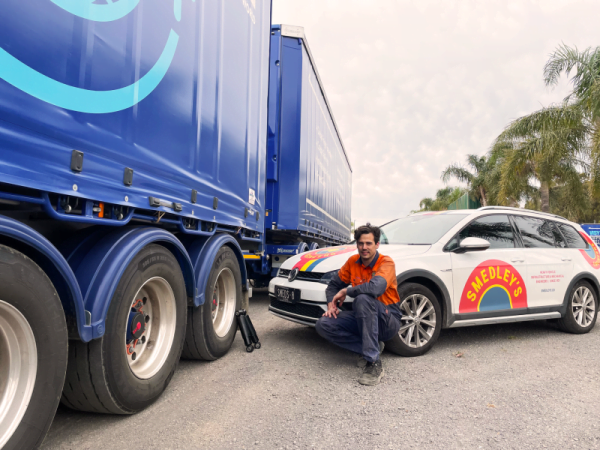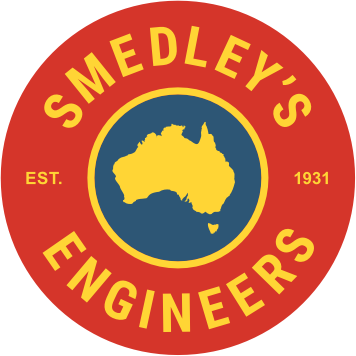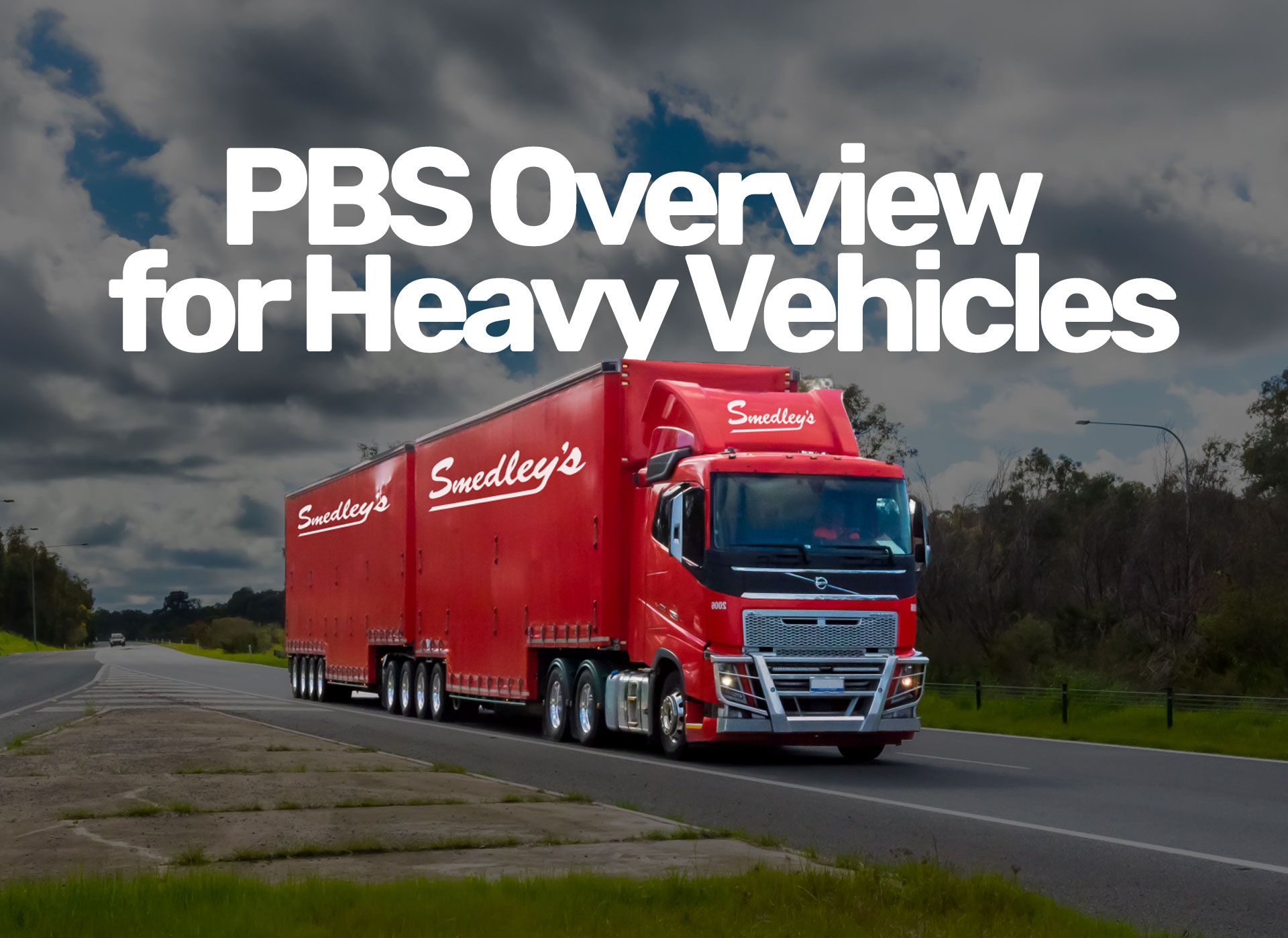Australia’s freight task is growing, and so is the need for smarter, safer, and more sustainable transport solutions. That’s where the Performance Based Standards (PBS) scheme comes in.
Introduced in 2007 by the National Transport Commission (NTC) and now managed by the National Heavy Vehicle Regulator (NHVR), PBS is a government-endorsed framework that gives heavy vehicle operators the opportunity to break free from traditional design limitations. Instead of following rigid size and weight rules, PBS allows you to run vehicles that are designed to perform safely, productively, and efficiently, on approved networks.
But for many fleet managers, compliance officers, and business owners, PBS can seem complex or inaccessible. What does it really involve? Who qualifies? And how do you get started?
In this guide, we’ll unpack the key concepts behind Performance Based Standards in Australia, explain how it works, and show how Smedley’s Engineers – with decades of PBS experience – can help you make it work for your fleet.

What Is PBS and Why Was It Introduced?
The Performance Based Standards (PBS) scheme was introduced in 2007 to give heavy vehicle operators greater flexibility and smarter options when it comes to vehicle design. Instead of relying on prescriptive rules based on length or weight, PBS focuses on how a vehicle performs on the road, using real-world safety and infrastructure criteria.
Under PBS, vehicles are assessed against 16 performance-based safety standards and 4 infrastructure standards, including things like turning ability, braking, stability, and pavement wear. If the vehicle can meet these benchmarks, it may be eligible to operate with higher payloads or on more efficient routes.
The aim of PBS is simple: enable vehicles to do their job more safely, productively, and sustainably, while ensuring they’re suitable for the roads they’ll be using. This approach encourages innovation, allowing transport operators to adopt custom-designed combinations that better suit their freight task, rather than being limited by one-size-fits-all regulations.
PBS has now become a cornerstone of Australia’s heavy vehicle regulatory system. For businesses willing to invest in better design and performance, it presents an opportunity to boost productivity, reduce operating costs, and increase safety, all within a compliant framework.

Key Benefits of PBS for Operators
For fleet operators and business owners, the Performance Based Standards (PBS) scheme isn’t just about compliance, it’s a tool for unlocking real commercial advantages.
One of the biggest benefits is increased productivity. PBS-approved vehicles are often able to carry more freight per trip than conventional designs, in some cases, up to 60% more. That means fewer trips to move the same amount of freight, lower fuel costs, and better asset utilisation across your fleet.
Another key advantage is access to more efficient road networks. Because vehicles are assessed on performance rather than size alone, PBS can open up routes that would otherwise be unavailable to larger or heavier combinations. With smarter road access, operators can reduce travel times, improve delivery schedules, and lower overall transport costs.
PBS vehicles also offer gains in safety. The scheme’s performance standards focus on handling, stability, braking, and roll resistance, meaning the vehicles approved under PBS are designed to perform better on the road, even when carrying larger loads.
In terms of sustainability, PBS can help reduce emissions and environmental impact. Fewer trips and better fuel efficiency result in lower carbon output, an increasingly important factor for both operators and customers.
PBS also encourages innovation and fit-for-purpose design. Rather than being restricted to traditional vehicle shapes or lengths, operators can work with engineering consultants like Smedley’s to create combinations that are tailored to the freight task, delivering better results for customers and more value for the business.
For operators looking to improve performance without compromising safety or compliance, PBS offers a forward-thinking path that aligns with both business goals and regulatory standards.
How PBS Works – An Overview
Understanding how PBS works is the first step in deciding whether it’s the right move for your fleet. While the process can seem complex, it follows a clear structure — and with the right support, it becomes straightforward.
At its core, PBS assesses whether a vehicle or combination can meet national performance standards. These standards focus on how the vehicle behaves in real-world conditions: how it turns, brakes, accelerates, carries weight, and interacts with road surfaces.
To determine compliance, the process generally follows these stages:
Consultation & Feasibility
Before anything is built or modified, it starts with a discussion. You’ll work with PBS consultants, like the team at Smedley’s Engineers, to define your goals, assess your current equipment, and determine whether PBS is suitable for your operation.
Concept Design & Preliminary Access Review
Once the scope is clear, engineers prepare the technical design of your proposed vehicle or combination. This includes detailed specifications such as axle spacing, turning paths, and suspension types — all tailored to meet PBS requirements and your freight task.
At this early stage, Smedley’s can also lodge an In Principle Access Application to check whether your proposed design is likely to meet road network access requirements. This step helps avoid pursuing vehicle combinations that may later be rejected due to reference vehicle restrictions or local road manager constraints. By flagging access issues early, it allows operators to avoid costly delays or design changes and ensures the final vehicle is both compliant and viable in the real world.
Performance Assessment
Next, the vehicle design is put through simulation testing to measure its compliance with the 16 PBS safety standards and 4 infrastructure standards. This includes modelling how it performs during cornering, braking, and acceleration, as well as how it impacts road surfaces and bridges.
Design Approval (DA)
If the vehicle passes all assessments, the design is submitted to the NHVR for formal Design Approval. This document confirms that your combination meets the PBS framework and can proceed to the build or modification stage.
Vehicle Approval (VA) & Inspection
Once built, the vehicle is inspected by a certified PBS engineer to ensure it matches the approved design. If compliant, a Vehicle Approval (VA) is issued, confirming the vehicle is ready for operation — pending access approval.
Network Access & Permits
The final step is matching your vehicle to the right network. Depending on your configuration and classification, Smedley’s can identify suitable routes and manage the permit process via the NHVR Portal. If an earlier In Principle Access Application was submitted, this can streamline final approvals and help reduce turnaround times.
What Do I Need to Be PBS-Compliant?
To operate under the PBS scheme, your vehicle or combination must be engineered, assessed, and approved to meet a specific set of safety and infrastructure standards. But compliance doesn’t stop at design, it also depends on the components you use and how well your vehicle matches its approved specification in the field.
Here are the key areas to consider:
Vehicle Design & Configuration
Your design must be tailored to meet PBS performance requirements. This includes axle groupings, suspension type, dimensions, turning paths, and weight distribution. Vehicles designed outside these tolerances may not be eligible for approval, which is why early consultation is essential.
Tyres & Braking Systems
Tyre selection remains important, but the process is now more flexible. With the introduction of generic tyre models, PBS no longer requires specific brands — tyres just need to meet the required load and speed ratings.
For braking systems, performance compliance is essential. Most PBS combinations must be fitted with ABS or EBS to meet safety standards. Load Proportioning Valves (LPVs), while previously accepted on some older vehicles, are now being phased out and may no longer be considered compliant in future assessments.
Existing vs New Equipment
You may be able to use existing trailers or components if they meet PBS requirements. Smedley’s Engineers can assess your fleet and help determine whether modification is possible – or whether new equipment is the better long-term solution.
Permit Management
Being compliant also means keeping your approvals up to date. Permits typically need to be renewed every 2–3 years, and updates are required if you make changes to your configuration or access routes.
Record-Keeping & Proof of Compliance
Operators must be able to show that their vehicle matches the approved PBS design at all times. This includes carrying the correct Vehicle Approval and access permits during operation.
Getting compliance right is easier when you’re supported by experts. Smedley’s Engineers helps ensure you meet all PBS requirements from day one — and stay compliant for the life of your fleet.
The Role of Smedley’s Engineers
With over 16,000 PBS and ADR certifications delivered, Smedley’s Engineers is one of Australia’s most experienced PBS consultants, and one of the few to offer a completely in-house, end-to-end service.
Whether you’re designing a new combination or modifying existing equipment, Smedley’s can manage the entire PBS process for you. From concept development and assessment to vehicle inspection, approval, and access applications, everything is handled by their expert engineering team.
With offices in Victoria, New South Wales, and Queensland, Smedley’s is positioned to support operators nationwide, and their clients include some of the country’s most respected transport businesses, like VISY Logistics, Nolan’s Interstate Transport, and Ron Finemore Transport.
What sets them apart is their ability to simplify what can be a highly technical and frustrating process. They don’t just tick boxes – they help you find smart, profitable ways to move freight safely and legally, using combinations that are tailored to your business.
Whether you’re new to PBS or looking to scale your fleet, Smedley’s Engineers provides the advice, technical expertise, and compliance support you need to move forward with confidence.
Is PBS Right for You?
PBS is more than just a regulatory option, it’s a smart strategy for operators looking to move more freight, more efficiently, with fewer trips and less waste. By focusing on performance rather than rigid dimensions, PBS opens the door to tailored solutions that improve productivity, safety, and sustainability.
If you’re unsure whether PBS is right for your operation, the best place to start is with a conversation.
Smedley’s Engineers has helped hundreds of businesses unlock the benefits of PBS with minimal fuss and maximum return. Whether you need a full approval pathway or just initial advice, our team is here to help.
📍 Nationwide service – VIC, NSW & QLD
📞 (03) 9421 6697
📩 enquiries@smedleys.co
👉 Request a Free Quote



